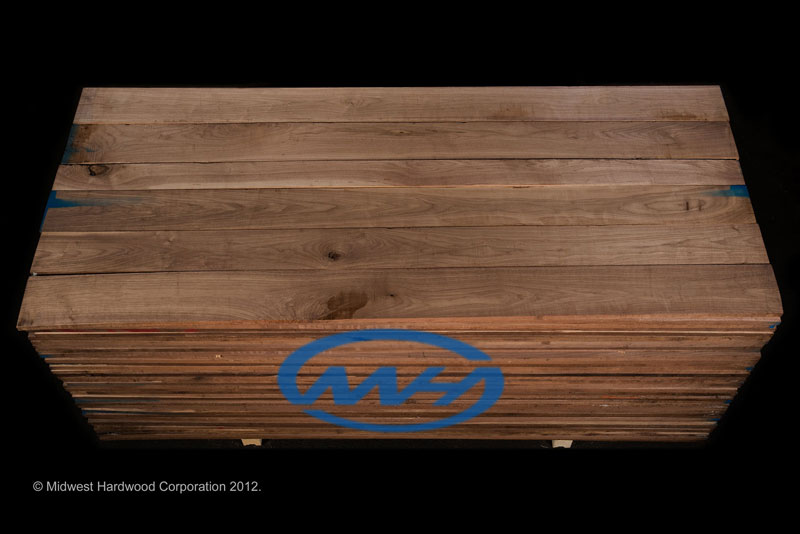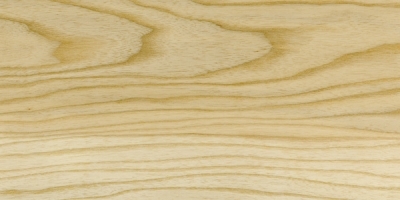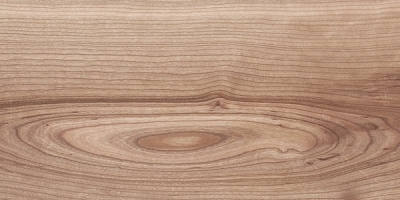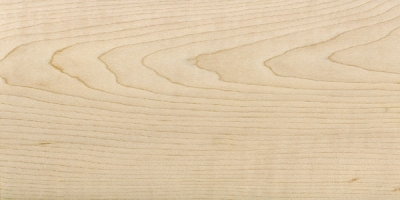Midwest Hardwood Company selling lumber
Kiln Dried Hardwood Lumber
Midwest Hardwood Company produces a wide range of top-quality Northern hardwood lumber products. See below for the species we produce and the grades they are available in. Get the most up-to-date lumber stock list at the link below.
Download Our Current Stock List
Virtual Lumber Bundles
Midwest Hardwood has a full gallery of professionally photographed packs of lumber. Packs are available to view in a variety of species and grades, and showcase the top ten layers of a typical Midwest Hardwood Company bundle of lumber.
The showcase allows customers to feel confident in the quality and consistency that Midwest Hardwood Company offers. For the full gallery of lumber bundles, click the link below.
View Virtual Lumber Bundles
Northern Black Walnut
The sapwood of walnut is creamy white, while the heartwood is light brown to dark chocolate brown, occasionally with a purplish cast and darker streaks. The wood develops a rich patina that grows more lustrous with age. Walnut is usually supplied steamed, to darken sapwood. The wood is generally straight-grained, but sometimes with wavy or curly grain that produces an attractive and decorative figure. This species produces a greater variety of figure types than any other.
Available In:

Northern White Oak
Character marked hardwoods shall admit any kind, number or distribution of the following characteristics incident to tree growth; heartwood, sapwood, knots, burls, swirls or other fiber irregularities, bird pecks, holes or grooves, knots not exceeding 3” in diameter and color streaks or spots, and light stain, but the cuttings shall not admit decay, loose knots, excessive pith, shake, or split.
Available In:
- FAS
- Rift & Quartered
- Rustics
- Fixed Width

Northern Red Oak
The sapwood in Red Oak is blonde and usually one to two inches thick; the heartwood is very light brown with a tinge of red or pink. Due to slower growth, wood cut in northern US has a finer texture, more consistent pale pink color and somewhat denser, than central or southern US oak. Quarter sawn Red Oak does exhibit some fleck or “medullary ray” effect, although it is not nearly as pronounced as in White Oak. The Rift sawn Red oak offers a calm, straight grained appearance used in many contemporary settings for doors, cabinetry, flooring and other millwork.
Available In:
- FAS
- Rift & Quartered
- Rustics
- Fixed Width

Hickory
Character marked hardwoods shall admit any kind, number or distribution of the following characteristics incident to tree growth; heartwood, sapwood, knots, burls, swirls or other fiber irregularities, bird pecks, holes or grooves, knots not exceeding 3” in diameter and color streaks or spots, and light stain, but the cuttings shall not admit decay, loose knots, excessive pith, shake, or split.
Available In:
- FAS
- Rustics
- Fixed Width

Hard Maple
Character marked hardwoods shall admit any kind, number or distribution of the following characteristics incident to tree growth; heartwood, sapwood, knots, burls, swirls or other fiber irregularities, bird pecks, holes or grooves, knots not exceeding 3” in diameter and color streaks or spots, and light stain, but the cuttings shall not admit decay, loose knots, excessive pith, shake, or split.
Available In:

Cherry
Character marked hardwoods shall admit any kind, number or distribution of the following characteristics incident to tree growth; heartwood, sapwood, knots, burls, swirls or other fiber irregularities, bird pecks, holes or grooves, knots not exceeding 3” in diameter and color streaks or spots, and light stain, but the cuttings shall not admit decay, loose knots, excessive pith, shake, or split.
Available In:
- FAS
- Rustics
- Fixed Width

Kiln Dried Lumber Species Available

Alder (Red)
Alder (Red)×

Scientific Name: Alnue rubra
Common Names: Red Alder, Alder
Market Availability: Usually available in 4/4 – 5/4. Limited availability in 6/4 – 8/4
Common Uses: Flooring, furniture, cabinets
Regional Differences: Alder grows in the Pacific Northwestern region of the USA and Canada
Grade: NHLA Alder grade rules. From highest to lowest: Superiors, Cabinet Grade, Custom Shop, Com-Shop, Frame Grade, #3 / Econo Frame Grade
Defects to consider: Stain, sticker shadow
Alternatives: Soft Maple, White Birch, Beech, Cherry
Shipping Weight: Kiln Dried 2750 lbs/MBF (440 kg/m3)
Specific Gravity: Kiln Dried 0.41
Compressive Strength: (Perpendicular to grain) 440 psi
Janka Hardness: (Pounds-force) 590

American Beech
American Beech×

Scientific Name: Fagus grandifolia
Common Names: American Beech
Common Uses: Lumber, veneer, flooring, crates/pallets, railroad ties, musical instruments, furniture, turnery, and other small wooden objects
Color Specifications: Beech is typically a pale cream color, sometimes with a pink or brown hue. Veneer tends to be slightly darker colored, as slicing the veneer usually requires the wood to be prepared with steam, which gives the wood a more golden tone. Flatsawn surfaces tend to be very plain, while quartersawn surfaces exhibit a silvery fleck pattern
Grade: NHLA Standard Grade Rules
Dried Weight: 46 lbs/ft3 (730 kg/m3)
Specific Gravity: .54
Janka Hardness: (Pounds-force) 1,300 lbf (5,780 N)

Ash (Black)
Ash (Black)×

Scientific Name: Fraxinus nigra
Common Names: Black Ash
Common Uses: Flooring, millwork, boxes/crates, baseball bats, and other turned objects such as tool handles
Color Specifications: darker shades can also be seen, which is sometimes sold as Olive Ash. Black Ash tends to be a bit darker in color than the White Ash
Grade: NHLA Standard Grade Rules
Specific Gravity: .45
Janka Hardness: (Pounds-force) 850 lbf (3,780 N)

Ash (White)
Ash (White)×

Scientific Name: Fraxinus Americana
Common Names: White Ash, Green Ash, Brown Ash, Tough Ash, Swamp Ash
Market Availability: Usually plentiful in 4/4 – 8/4 thickness
Common Uses: Flooring, furniture, cabinets, handles, baseball bats, mouldings
Regional Differences: Ash from northern regions will have a higher heartwood content than Appalachian or Southern Ash. Swamp Ash from far Southern states may be too soft in texture for furniture or flooring. However, Swamp Ash weighing less than 2.8 lbs per board foot is in high demand for guitar stock.
Color Specifications: Sap 1 Face & Better, Unselected, Brown
Grade: NHLA Standard Grade Rules
Defects to consider: Glass worm, sticker shadow, stain
Alternatives: Oak, maple, hickory
Shipping Weight: Kiln dried: 3700 lbs/MBF (711 kg/m3) net tally
Specific Gravity: Kiln Dried 0.62, Green 0.52
Compressive Strength: (Perpendicular to grain) 1160 psi
Janka Hardness: (Pounds-force) 1320

Aspen
Aspen×

Scientific Name: Populus Tremuloides, Populus grandidentata
Common Names: Aspen, Popple, Quaking Aspen, Trembling Aspen, Bigtooth Aspen
Market Availability: Usually available in 4/4. Limited availability in 5/4 – 8/4
Common Uses: Furniture, giftware
Regional Differences: Aspen is exclusively a northern species
Color Specifications: Unselected, Limited Red Heart
Grade: NHLA Standard Grade Rules
Defects to consider: Stain, red heart
Alternatives: Basswood, Cottonwood, Yellow Poplar
Shipping Weight: Kiln Dried 2690 lbs/MBF (517 kg/m3)
Specific Gravity: Kiln Dried 0.35, Green 0.33
Compressive Strength: (Perpendicular to grain) 370 psi Quaking, 450 psi Bigtooth
Janka Hardness: (Pounds-force) 350 Quaking, 420 Bigtooth

Baltic Birch
Baltic Birch×

Scientific Name: Betula Spp.
Common Names: Baltic Birch, Birch, English Birch, European Birch, Finnish Birch, Swedish Birch
Properties: Interior Use Only
Grows: Baltic Birch grows throughout much of Europe, Scandinavia, and the United Kingdom. It tends to prefer open woodland, with gravelly and sandy soil.
Grade: NHLA Standard Grade Rules
Shipping Weight: 3.5#/board foot
Specific Gravity: .66
Compressive Strength: (Perpendicular to grain) N/A
Janka Hardness: (Pounds-force) 1230

Basswood
Basswood×

Scientific Name: Tilia americana
Common Names: Basswood, American Linden, American Lime
Market Availability: Usually available in 4/4 – 8/4. Limited availability in 9/4 – 16/4
Common Uses: Venetian blinds, piano keys, picture frame mouldings, carvings, giftware
Regional Differences: Northern region Basswood is generally lighter in color than Appalachian region Basswood
Color Specifications: Unselected, Winter Sawn Basswood is occasionally specified due to the brighter white color of lumber when sawn in winter
Grade: NHLA Standard Grade Rules
Defects to consider: tain, sticker indentation
Alternatives: Aspen, Yellow Poplar, Cottonwood
Shipping Weight: Kiln Dried 2580 lbs/MBF (496 kg/m3)
Specific Gravity: Kiln Dried 0.38, Green 0.32
Compressive Strength: (Perpendicular to grain) 370 psi
Janka Hardness: (Pounds-force) 410

Beech (Euro Steamed)
Beech (Euro Steamed)×

Scientific Name: Fagus sylvatica
Common Names: English Beech, French Beech, Romanian Beech
Market Availability: Available from quality hardwood speciality distributors
Properties: Very suitable for steam-bending
Color: Whitish to very pale brown, Grain is straight and fine and has a characteristic fleck when quarter sawn
Grows: Throughout central Europe and the united Kingdom, reaches 100' heights and up to 4' diameters
Grade: NHLA Standard Grade Rules
Health Risks to consider: Dermatitis, eye irritation
Alternatives: American Beech
Shipping Weight: 720kg/m3 or 3.75#/board foot
Specific Gravity: .72
Compressive Strength: (Perpendicular to grain) N/A
Janka Hardness: (Pounds-force) 1300

Birch (Red)
Birch (Red)×

Scientific Name: Betula alleghaniensis
Common Names: Yellow Birch, Red Birch (heartwood)
Market Availability: Usually available in 4/4 – 5/4. Limited availability in 6/4 – 8/4
Common Uses: Flooring, furniture, cabinets
Regional Differences: Birch is exclusively a northern species
Color Specifications: Unselected, Red 1 Face (Red Birch), Sap 1 Face
Grade: NHLA Standard Grade Rules
Defects to consider: Stain, sticker shadow
Alternatives: Hard Maple, Soft Maple, White Birch, Beech, Cherry
Shipping Weight: Kiln Dried 4300 lbs/MBF (826 kg/m3)
Specific Gravity: Kiln Dried 0.57, Green 0.50
Compressive Strength: (Perpendicular to grain) 970 psi
Janka Hardness: (Pounds-force) 1260

Birch (White)
Birch (White)×

Scientific Name: Betula papyrifera
Common Names: White Birch, Paper Birch
Market Availability: Usually available in 4/4. Limited availability in 5/4
Common Uses: Furniture, cabinets, mouldings, dowels
Regional Differences: White Birch is exclusively a northern species
Color Specifications: Unselected
Grade: NHLA Standard Grade Rules
Defects to consider: Stain, sticker shadow, fleck
Alternatives: Yellow Birch, Soft Maple, Hard Maple
Shipping Weight: Kiln Dried 3870 lbs/MBF (744 kg/m3)
Specific Gravity: Kiln Dried 0.50, Green 0.43
Compressive Strength: (Perpendicular to grain) 600 psi
Janka Hardness: (Pounds-force) 910

Birch (Yellow)
Birch (Yellow)×

Scientific Name: Betula alleghaniensis
Common Names: Yellow Birch, Red Birch (heartwood)
Market Availability: Usually available in 4/4 – 5/4. Limited availability in 6/4 – 8/4
Common Uses: Flooring, furniture, cabinets
Regional Differences: Yellow Birch is exclusively a northern species
Color Specifications: Unselected, Red 1 Face (Red Birch), Sap 1 Face
Grade: NHLA Standard Grade Rules
Defects to consider: Stain, sticker shadow
Alternatives: Hard Maple, Soft Maple, White Birch, Beech, Cherry
Shipping Weight: Kiln Dried 4300 lbs/MBF (826 kg/m3)
Specific Gravity: Kiln Dried 0.57, Green 0.50
Compressive Strength: (Perpendicular to grain) 970 psi
Janka Hardness: (Pounds-force) 1260

Cherry
Cherry×

Learn More About Cherry: Click Here
Scientific Name: Prunus serotina
Common Names: Cherry, Black Cherry, Wild Cherry
Market Availability: Usually available in 4/4 – 8/4. Limited availability in 10/4 – 12/4
FSC Availability: Yes
Common Uses: Flooring, cabinets, furniture, mouldings
Regional Differences: Northern and Appalachian Cherry are similar. Cherry from Pennsylvania is generally believed to have the best color and lowest gum pocket content
Color Specifications: Unselected, Unlimited Sapwood, Red 1 Face, The red heartwood content of each face is often specified as a percentage
Grade: NHLA Standard Grade Rules
Defects to consider: Gum pocket
Alternatives: Soft Maple, White Birch (when both are stained)
Shipping Weight: Kiln Dried 3760 lbs/MBF (723 kg/m3)
Specific Gravity: Kiln Dried 0.51, Green 0.45
Compressive Strength: (Perpendicular to grain) 690 psi
Janka Hardness: (Pounds-force) 950

Hard Maple
Hard Maple×

Scientific Name: Acer Saccharum
Common Names: Hard Maple, Northern Hard Maple, Rock Maple, Sugar Maple
Market Availability: Usually available in 4/4 – 8/4. Limited availability in 10/4 – 16/4
Common Uses: Flooring, cabinets, furniture, mouldings, bowling pins, piano actions
Regional Differences: Hard Maple from the North shows higher sapwood content and a brighter sapwood shade versus Hard Maple from Appalachian & Central regions. Hard Maple is not commercially available from the South
Color Specifications: Unselected, #1&2 White, Sap 1 Face, Brown
Grade: NHLA Standard Grade Rules
Defects to consider: Sticker stain, stain, pinking (dark board cores), heart checking
Alternatives: Soft Maple, White Birch, Yellow Birch, Beech
Shipping Weight: Kiln Dried 4190 lbs/MBF (805 kg/m3)
Specific Gravity: Kiln Dried 0.55, Green 0.48
Compressive Strength: (Perpendicular to grain) 1470 psi
Janka Hardness: (Pounds-force) 1450

Hickory
Hickory×

Scientific Name: Carya Ovata
Common Names: Hickory, Shagbark Hickory, Pecan
Market Availability: Usually available in 4/4 & 5/4. Limited availability in 6/4 & 8/4. Many mills avoid producing hickory in summer due to risk of stain
Common Uses: Flooring, cabinets, tool handles
Regional Differences: Hickory from northern states displays a higher percentage of heartwood and mixed heartwood/sapwood (Calico). Southern Appalachian hickory tends to have a relatively high sapwood content. Pecan hickory is often found mixed in hickory lumber from Arkansas, Missouri, Tennessee & Kentucky
Color Specifications: Sap 1 Face, Unselected, Calico (mixed heartwood & sapwood), Brown
Grade: NHLA Standard Grade Rules
Defects to consider: Stain, sticker shadow
Alternatives: Ash, Oak
Shipping Weight: Kiln dried: 4200 lbs/MBF (807 kg/m3)
Specific Gravity: Kiln Dried 0.64, Green 0.60
Compressive Strength: (Perpendicular to grain) 1760 psi
Janka Hardness: (Pounds-force) 1820

Mahogany, African
Mahogany, African×

Scientific Name Khaya ivorensis
Common Names akuk, bandoro, eri kiree, undianunu, oganwo
Market Source Available from quality hardwood speciality distributors
Properties African Mahogany has medium crushing strength and low bending strength and shock resistance. It is generally easy to work with both hand and machine tools. It has interlocked grain and can be prone to tearing when planed. Avoid ferrous fasteners can lead to iron staining
Grows Tropical areas of West, Central and East Africa, averages 110-140ft and 6' in diameter
Color Specifications African Mahogany is usally light pinkish-brown when freshly cut, darkening with exposure to light and air to a deep reddish color.
Grade NHLA Standard Grading Rules
Health risks to consider Dermatitis, especially of the face forearms and back of hands: respiratory problems during machining
Alternatives True (Honduran) Mahogany, Santos Mahogany
Shipping Weight 33#ft3 or 2.75#/board foot or 2750#/mbf
Specific Gravity .53
Compressive Strength N/A
Janka Hardness (Pounds-force) 830

Red Oak
Red Oak×

Scientific Name: Quercus rubra, Quercus spp.
Common Names: The Red oak family includes Red Oak, Northern Red Oak, Southern Red Oak, Pin Oak, Turkey Oak, Willow Oak, Black Oak, Blackjack Oak, Cherrybark Oak, Laurel Oak, Nuttail Oak & Scarlet Oak
Market Availability: Usually available in 4/4 – 8/4. Limited availability in 10/4-16/4
Common Uses: Flooring, cabinets, furniture, mouldings
Regional Differences: Northern Red Oak features tight growth rings, less sapwood and relatively even light heartwood. Red Oak from southern states is often the least expensive and exhibits larger average board sizes. Sapwood, heartwood color variation, mineral streak and wide growth rings are more prevalent in Southern Red Oak. Appalachian Red Oak is a compromise between the northern and southern features
Color Specifications: Unselected, sorted for uniformity of heartwood color
Grade: NHLA Standard Grade Rules
Defects to consider: Surface checking, honeycomb, sapwood stain, mineral streak
Alternatives: White Oak, White Ash, Hickory
Shipping Weight: Kiln Dried 3870 lbs/MBF (744 kg/m3)
Specific Gravity: Kiln Dried 0.62, Green 0.56
Compressive Strength: (Perpendicular to grain) 1010 psi
Janka Hardness: (Pounds-force) 1290

Soft Maple
Soft Maple×

Scientific Name: Acer Rubrum, Acer Saccharinum
Common Names: Red Leaf Maple, Silver Leaf Maple
Market Availability: Usually available in 4/4 – 8/4. Limited availability in 10/4 – 16/4
Common Uses: Cabinets, furniture, mouldings
Regional Differences: Soft Maple from Northern & Eastern regions is more often the Red Leaf variety. Central region Soft Maple, especially from the states of Iowa, Missouri & Illinois are often mainly the Silver Leaf Maple variety. Central Region Silver Leaf Soft Maple often shows a higher heartwood content than Northern Red Leaf Soft Maple
Color Specifications: Unselected, Sap 1 Face, Brown
Grade: NHLA Standard Grade Rules
Defects to consider: Stain, sticker shadow
Alternatives: Hard Maple, White Birch, Yellow Birch. Soft Maple is often used as a substitute for more expensive species such as Cherry or Walnut
Shipping Weight: Kiln Dried 3600 lbs/MBF (692 kg/m3)
Specific Gravity: Kiln Dried 0.42, Green 0.42
Compressive Strength: (Perpendicular to grain) 1000 psi Red, 740 psi Silver
Janka Hardness: (Pounds-force) 950 Red, 700 Silver

Walnut
Walnut×

Scientific Name: Juglans nigra
Common Names: Walnut, Black Walnut, Eastern Walnut
Market Availability: Usually available in 4/4 – 8/4. Limited availability in 10/4 – 16/4
Common Uses: Flooring, cabinets, furniture, mouldings, trophies, giftware
Regional Differences: Walnut from the north often shows a more uniform chocolate brown color. Walnut from the southern end of the growing range may exhibit a wider range of color with some green or purple hues
Color Specifications: Steamed, unsteamed. Nearly all walnut is steamed prior to kiln drying. Steaming darkens the sapwood through caramelization of the plant sugars in the wood fiber. Although walnut sapwood darkens considerably during steaming, after planing it will remain lighter in color than the heartwood
Grade: Walnut is graded per NHLA Walnut grade rules. These rules are generally considered to be more lenient than NHLA Standard grade rules
Defects to consider: Poor steaming, honeycomb (in thick stock)
Alternatives: Rosewood, Wenge
Shipping Weight: Kiln Dried 3660 lbs/MBF (703 kg/m3)
Specific Gravity: Kiln Dried 0.55, Green 0.48
Compressive Strength: (Perpendicular to grain) 1010 psi
Janka Hardness: (Pounds-force) 1010

White Oak
White Oak×

Scientific Name: Quercus alba, Quercus spp.
Common Names: The White Oak family includes White Oak, Chestnut Oak, Mountain Oak, Burr Oak, Blue Oak, Chinkapin Oak, Emory Oak, Gambel Oak, Live Oak, Overcup Oak, Stave Oak, Post Oak, & Swamp Oak
Market Availability: Usually available in 4/4 – 8/4. Limited availability in 10/4 – 16/4
Common Uses: Flooring, furniture, cabinets, mouldings, handles, barrel staves
Regional Differences: Northern White Oak has tight growth rings, less sapwood and slightly darker heartwood. 6’-8’ lengths are more widely available in the North. White Oak is most abundant in Appalachian/Central region states including Indiana, Ohio, Kentucky, Tennessee & West Virginia. White Oak from Southern states is often the least expensive and exhibits larger average board sizes. Sapwood and wide growth rings are more prevalent in Southern White Oak
Color Specifications: Unselected, Heart 1 Face
Grade: NHLA Standard Grade Rules
Defects to consider: Surface checking, honeycomb, sapwood stain
Alternatives: Red Oak, White Ash, Hickory
Shipping Weight: Kiln Dried 4190 lbs/MBF (805 kg/m3)
Specific Gravity: Kiln Dried 0.67, Green 0.59
Compressive Strength: (Perpendicular to grain) 1070 psi
Janka Hardness: (Pounds-force) 1360

White Pine
White Pine×

Scientific Name: Pinus strobus
Common Names: Eastern White Pine, White Pine
Market Availability: Widely available in 4/4 – 8/4
Common Uses: Joinery, mouldings, cabinets, paneling
Regional Differences: Available from forests in the Northern Midwest, Northeast and Carolinas
Color Specifications: Unselected
Grade: Northeastern Lumber Manufacturers Association (NELMA) Eastern White Pine grade rules; From highest to lowest: C Select, D Select, Finish common, Premium common, Standard common, Industrial common
Defects to consider: Stain, pitch
Alternatives: Basswood, Aspen, Cottonwood, Yellow Poplar
Shipping Weight: Kiln Dried 2300 lbs/MBF (442 kg/m3)
Specific Gravity: Kiln Dried 0.42
Compressive Strength: (Perpendicular to grain) 350 psi
Janka Hardness: (Pounds-force) 380
Footer
